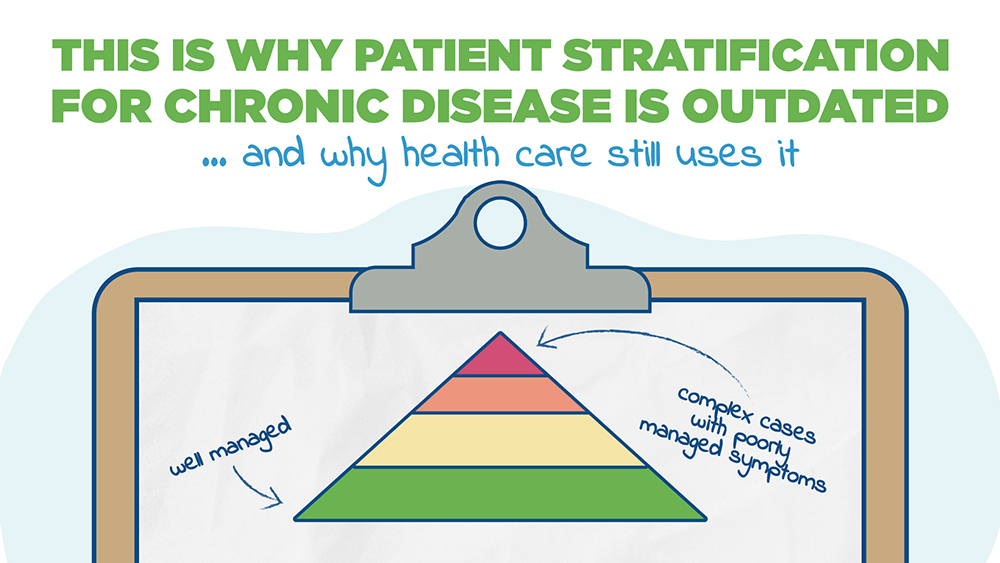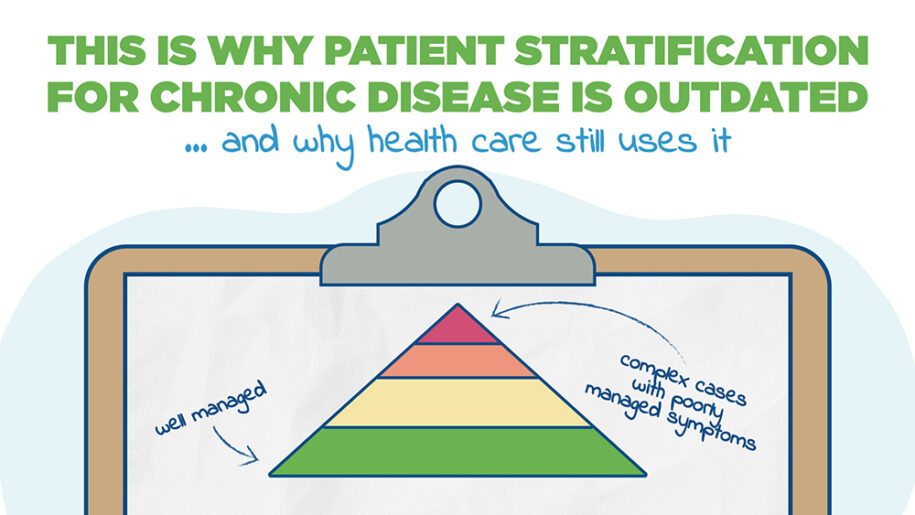
What is risk stratification?
Risk stratification is the identification of a group or cohort of patients within a given population that, based on past claims and diagnosis data, represents the those who are expected to present the highest risk in the next 12 months, both from a clinical and financial perspective.
Stratification may also incorporate predictive algorithms, but its goal is always the same: to stratify a given population and identify the high-risk patients, usually the top 5%.
Why is risk stratification used?
It’s always important to understand the “why.”
Clinicians started systematically stratifying patient populations based on risk in the 1980s, back when managed care first came into vogue. This was primarily because the top 5% sickest patients in a population usually consume more than half of overall healthcare spending. While this is mostly true, we have learned more recently that patients in the top 5% are always changing (more on this later).
So why is this approach still widely used today in health care? Aside from the obvious that many just don’t know another way, care management is often still viewed as a finite resource, one that is cost-prohibitive to scale to more than 5% of any population.
Need help scaling your CCM/RPM program beyond 5% of your population? Schedule some time with us to find out how.
While historically this was true back in the ’80s, it has changed over the past decade and is no longer the case. Existing reimbursements for remote care management services like CCM, RPM and TCM make scaling care management to 50% or more of your Medicare and Medicare Advantage populations both cost-effective and self-sustaining.
The problem with risk stratification
When it comes to sorting patient populations, data gives the false impression that what’s good for all is good for one. It’s like using a luggage scale to weigh a paperclip. The tool is simply too bulky to inform on something so delicate.
Studies such as this one by Kaiser Permanente show that the top 5% sickest patients are a lot more heterogeneous than previously thought back in the ’80s. They’re not static, and many who are not in that 5% could become a part of it in the future and vice versa.
At Signallamp, we see this all the time in the care management our nurses provide to patients of our large health system partners.
More than 40% of complex CCM cases are with patients who would not have otherwise been classified as “high risk.”
Here’s why unchecked stratification can lead to poor outcomes.
Stratification looks at the past patient, not the present or future patient
Stratification looks at the sum of a patient’s past medical claims and diagnosis history.
While past claims and diagnoses shouldn’t be totally disregarded, as referenced in this 2020 essay in Health Affairs, patients with a severe but short history of chronic illness may get lumped into a lower risk pool. On the other hand, those with well-managed but extended histories of chronic illness may fall into a high-risk pool.
In addition, it’s based on claims and billing data that inherently lacks context. It fails to account for patients who are “under coded.” In other words, their physicians may not have adequately coded their conditions on recent claims.
Other important context that may go untracked includes patients who have underlying but undiagnosed conditions, or patients whose conditions have been mild in the past but now trend toward hospitalization.
Racial disparities
Because it’s based on financial data, Black and minority patients are more likely to fall into lower risk pools because they account for less health care spending as a group. In turn, white patients who account for more spending are more likely to receive higher priority.
Administrative data vs. clinical data
As we discussed earlier, administrative data is mostly reduced to procedures linked to billing codes, which can be alarmingly inaccurate and lack insight into real patient experience.
Clinical data is far more valuable from a care-delivery standpoint, but it is difficult to quantify, as noted in research published in the journal Anesthesiology. It’s a narrative, and narratives are more difficult to sort on a spreadsheet.
Health systems often implement pre-packaged stratification models that don’t account for the realities clinicians see on the ground.
There’s only one way to solve this. Providers need to extend their relationships with patients outside their offices to have more honest and unfiltered conversations about their symptoms, medication compliance and goals. For all the innovation, relationship-based care remains the gold standard for the simple fact that every patient is different.
Chronic care management reduces reliance on stratification
Providers lean disproportionately on stratification for two reasons.
- They historically have needed a cost-effective tool to sort chronic disease patients into risk groups.
- They lack infrastructure for robust, longitudinal chronic care management.
Chronic care management fills in the gaps that data cannot, and Signallamp Health’s model brings it to health systems and practices tailor-made and at the right scale to produce measurable results.
While risk stratification will never go away entirely, effective chronic disease management and remote patient monitoring, deployed at scale, enables provider organizations to overcome the clinical, social and financial limitations inherent in risk stratification.
Providers will always need to assess and assign risk to their patient populations. Indeed, some patients will always be sicker than others. While that’s happening, it’s vital that they also extend their relationship with patients beyond the four walls of their offices and engage patients longitudinally to achieve the best possible outcomes.
Signallamp Health provides a counterweight for risk stratification and allows providers and health systems to balance data with patient relationships. Schedule a call with us to find out how.

